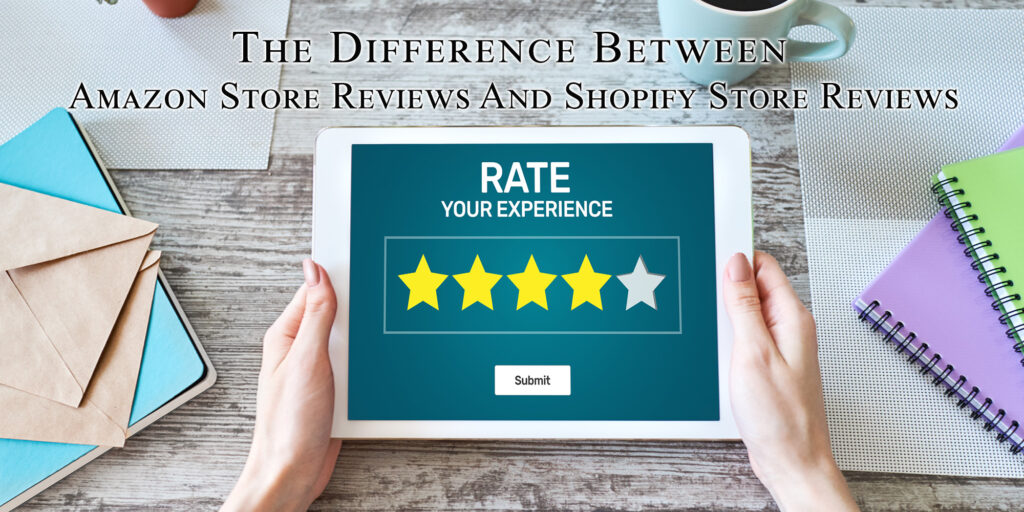1. Introduction to E-commerce Reviews
In the digital marketplace, customer reviews have become a cornerstone of trust and credibility. They not only guide potential buyers in making informed decisions but also serve as critical feedback for sellers aiming to improve their offerings and service. The impact of reviews extends beyond simple ratings; they influence search rankings, conversion rates, and overall brand perception. In this context, understanding the distinct approaches to reviews taken by Amazon and Shopify is crucial for sellers leveraging these platforms.
2. Amazon Store Reviews: A Deep Dive
Amazon, as a behemoth in the online retail space, operates a sophisticated review system that reflects its marketplace dynamics. Here’s a closer look at its components and implications:
2.1 Seller Performance and Customer Satisfaction
- Comprehensive Feedback System: Amazon’s review system is designed to encapsulate both product and seller performance. While product reviews focus on the items themselves, seller feedback assesses fulfillment efficiency, customer service quality, and overall satisfaction with the shopping experience.
- A-to-Z Guarantee: This feature underlines Amazon’s commitment to customer satisfaction, offering recourse for buyers if their experience falls short. It implicitly pressures sellers to maintain high standards to avoid disputes and negative reviews.
2.2 Algorithmic Nuances
- Search and Visibility: Amazon uses customer reviews as a key factor in its search algorithms. Products with higher ratings and more reviews tend to rank higher, making reviews a critical component of visibility and sales potential.
- Fake Review Detection: Amazon employs sophisticated algorithms to detect and remove fake reviews. This ongoing battle reflects the platform’s commitment to maintaining review integrity, although it’s not without its challenges and controversies.
2.3 Verified Purchases
- The “Verified Purchase” badge adds an additional layer of credibility to reviews, signaling to potential buyers that the reviewer has indeed bought the product through Amazon. This system helps mitigate the impact of non-verified reviews, which may be seen as less trustworthy.
3. Shopify Store Reviews: A Deep Dive
Shopify’s ecosystem offers a contrasting approach, emphasizing customization and direct control over the review process.
3.1 Customization and Branding
- Review Apps and Integrations: Shopify store owners can choose from a plethora of review apps, each offering different features and customization options. This flexibility allows sellers to tailor the review experience to their brand’s identity and customer engagement strategy.
- Design and Display: Unlike Amazon’s standardized review display, Shopify apps allow for extensive customization of how reviews appear on a store’s website. This can include anything from the layout of review sections to incorporating user-generated photos and videos.
3.2 Operational Flexibility
- Moderation and Response: Shopify gives sellers direct control over review moderation. This can be a double-edged sword, allowing for the management of unfair or spammy reviews but also raising questions about the authenticity of overly curated review sections.
- Engagement and Loyalty: The ability to respond to reviews directly (publicly or privately) offers Shopify sellers a powerful tool for customer engagement and service recovery, potentially turning negative experiences into positive ones.
3.3 The Role of Reviews in Building Trust
- Social Proof: Both Amazon and Shopify leverage reviews as a form of social proof, but the impact is manifested differently. On Amazon, the vast number of reviews and ratings can provide a broad consensus on product quality. For Shopify stores, detailed and personalized reviews can create a deeper sense of trust and community.
- SEO and Online Visibility: Beyond the immediate platforms, reviews contribute to a store’s online visibility through search engine optimization (SEO). Positive reviews can enhance a brand’s presence in search results, drawing more traffic to their store.

4. Comparative Analysis
4.1 Impact on Seller Strategies
- Amazon sellers must navigate a highly competitive marketplace, where the volume and quality of reviews can make or break a product’s success. Strategies often involve soliciting reviews through follow-up emails and participating in Amazon’s early reviewer programs.
- Shopify sellers focus on cultivating a brand image and loyal customer base, with reviews serving as testimonials to their service quality and product excellence. Customizing the review experience to align with brand identity is a common strategy.
4.2 Challenges and Opportunities
- Managing Negative Reviews: Both platforms present challenges in handling negative feedback. Amazon provides limited interaction with reviewers, while Shopify allows for more direct engagement. In either case, addressing concerns transparently and promptly is key to maintaining reputation.
- Leveraging Reviews for Growth: Encouraging satisfied customers to leave reviews is a universal challenge. Effective strategies include offering incentives, making the review process as easy as possible, and showcasing positive reviews in marketing materials.
5. Navigating the Review Landscape
The landscape of e-commerce reviews is complex, with Amazon and Shopify offering distinct ecosystems that reflect their underlying business models. For sellers, understanding these differences is crucial in developing effective strategies for gathering and leveraging customer feedback. Reviews are not just a metric of past performance but a vital tool for building trust, enhancing visibility, and driving future sales. Whether on the vast marketplace of Amazon or the customizable storefronts of Shopify, managing reviews with integrity, responsiveness, and strategic insight is essential for success in the digital marketplace.
For more information, visit Bel Oak Marketing.





